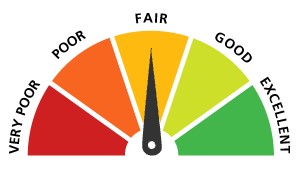“So, how was your day today”? If that’s a question you are asked as you arrive home from work, how do you respond?
The great majority of manufacturing workers (both shop floor and office), that I interact with on a daily basis, want to do a good job and earn their pay for the day. However, if I ask them, as they are preparing to leave, how they did today? They really don’t know if they earned their pay. They know they are tired, they know that their supervisor didn’t yell at them, they know there were issues with material (not being available, scrap), equipment (machines not up to speed, adjustments, breakdowns, etc.), resources (absenteeism, shared tools unavailable, too many emails, etc.). Frankly, it was just another day at work.
To use a sports analogy…businesses need to keep score, during the day, to determine if today was a good day. As a business leader, you don’t want to wait until the last day of the month, and until the accounting books are completed, to find out if you made money or lost money this month. Consequently, good business leaders have an idea via: daily shipments, orders, scrap, throughput, etc. how they stand.
The same should be true for all employees.
Leadership can help in this regard by:
- Set a reasonable goal
- Communicate that goal to all involved
- Monitor the progress of reaching the goal
- If the goal is not being met; understand why, identify improvements to meet the goal, implement these improvements and track them.
- If the goal is met; celebrate it, share it with people, congratulate them.
- Set a reasonable goal…
This could be a production throughput goal, an incoming orders metric, amount of scrap or rework, volume or dollars of shipments, etc. The goal can be a raw number or a percentage. The goal should be easily measureable so that it can obtained through minimal work.
The goal could be set by historical comparison (last year, last month, last week) or by where the company desires to be. This goal can be a reach and is tracked over time, or something to maintain.
The goal should have a baseline to compare against. A scrap number of 5% of raw material, doesn’t tell me anything until I know where I am in relation to the figure. Consequently, find out where you are now.
For example: If I want to lose weight I need to step onto the scale, note the weight and determine what I would like to be. Is it 10 lbs. less or is it 50 lbs. less? Obviously losing 50 lbs. would need to be accomplished over a longer period of time, say 5 lbs. / week; so I will give myself 10 weeks to meet the goal. Is that reasonable?
- Communicate the goal…
People need to know what is expected of them and these expectations should be clear and well defined. The business leader may know that the inventory turns need to be increased, but what does that mean to the material handler, purchaser or scheduler? How will it affect them and what can they do to meet this goal? All of these issues need to be taken into account in setting goals. Good communicating not only gives a goal but, the business & individual benefits of meeting the goal.
The method of communicating can be many, but should be consistent. Daily meetings with stakeholders (how did we do yesterday and what will we be doing today), posted metrics with regular updates, signage, etc. are all examples of communication.
- Monitor the progress…
How are you doing against the goal? If you don’t keep score during the game and don’t know where you stand, you can’t make adjustments to meet the goal. If the goal of a process is a determined number of units / day (throughput), it makes sense to check in every couple of hours to see how things are progressing. This check can be manual, visual, electronic, etc.
- If the goal is not being achieved…
If a piece of equipment breaks down, some incoming material is not available, a customer calls with a revision or request, etc.; these and other issues pop up. If the progress to the goal is being monitored, adjustments can then be made to alleviate these problems. It is important that when these problems occur the stakeholders are flexible enough, knowledgeable enough and have the authority to make decisions to make the necessary adjustments. Afterwards you can then determine why these incidences occurred, so that fixes can be implemented to reduce or eliminate these in the future and continuously improve the processes.
- Celebrate the successes…
When the goals are met you need to enjoy the fact that you met the goals. These can run the gamut…simple praises and acclaims to the stakeholders (“great job today”), honoring their achievements throughout the company (recognition awards), special celebrations (pizza party), financial bonuses, etc.
So…how did you do today? Can you and your employees answer this?

Jim Johnson, Insyte consultant, has more than 30 years of diverse manufacturing experience in engineering, project management, new product development and continuous improvement. Prior to joining Insyte, Jim held a variety of engineering positions at Greatbatch, Fisher-Price and General Motors. He is an active senior member of the Institute of Industrial Engineers. Jim is certified as a Professional Business Advisor through MEP University, is an ISO provisional lead auditor, and a trainer in lean manufacturing initiatives. He is on the Board of Advisors of RIT’s Industrial and Systems Engineering Department. Jim holds an MS in Industrial Engineering from the University at Buffalo and a BS in Industrial Engineering from RIT.

